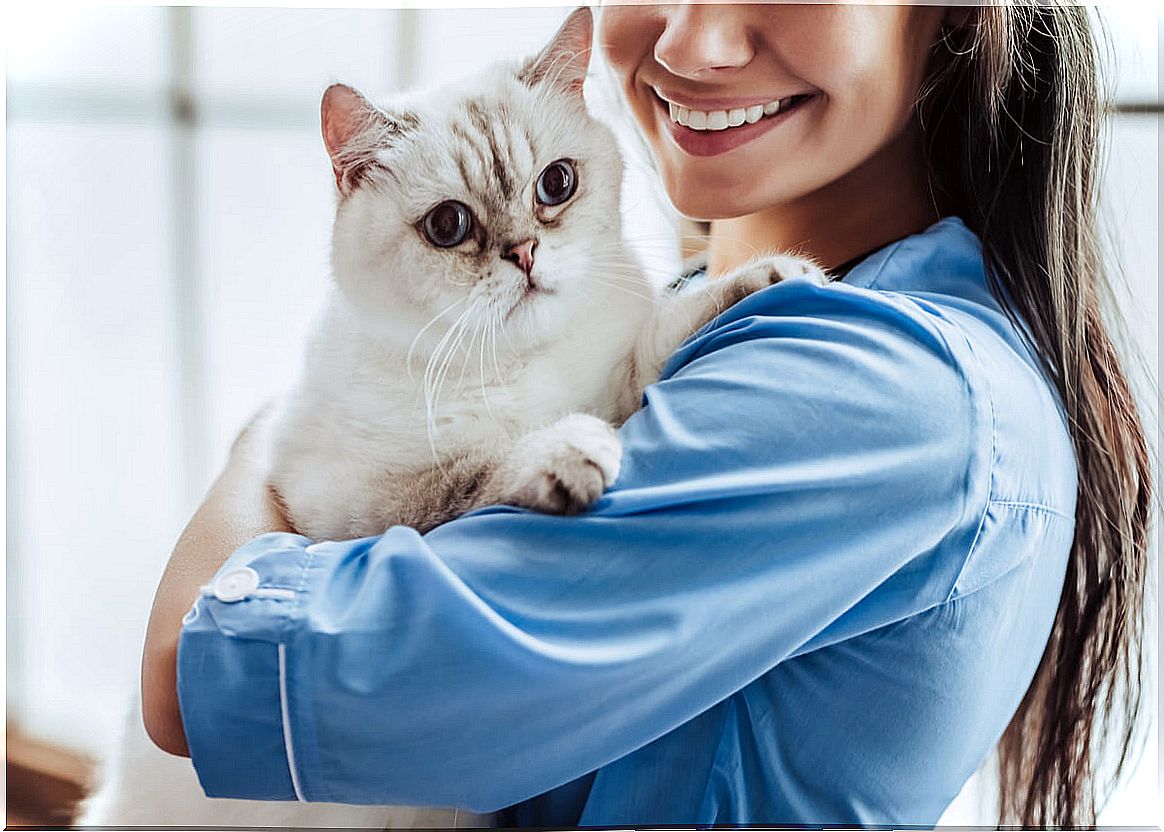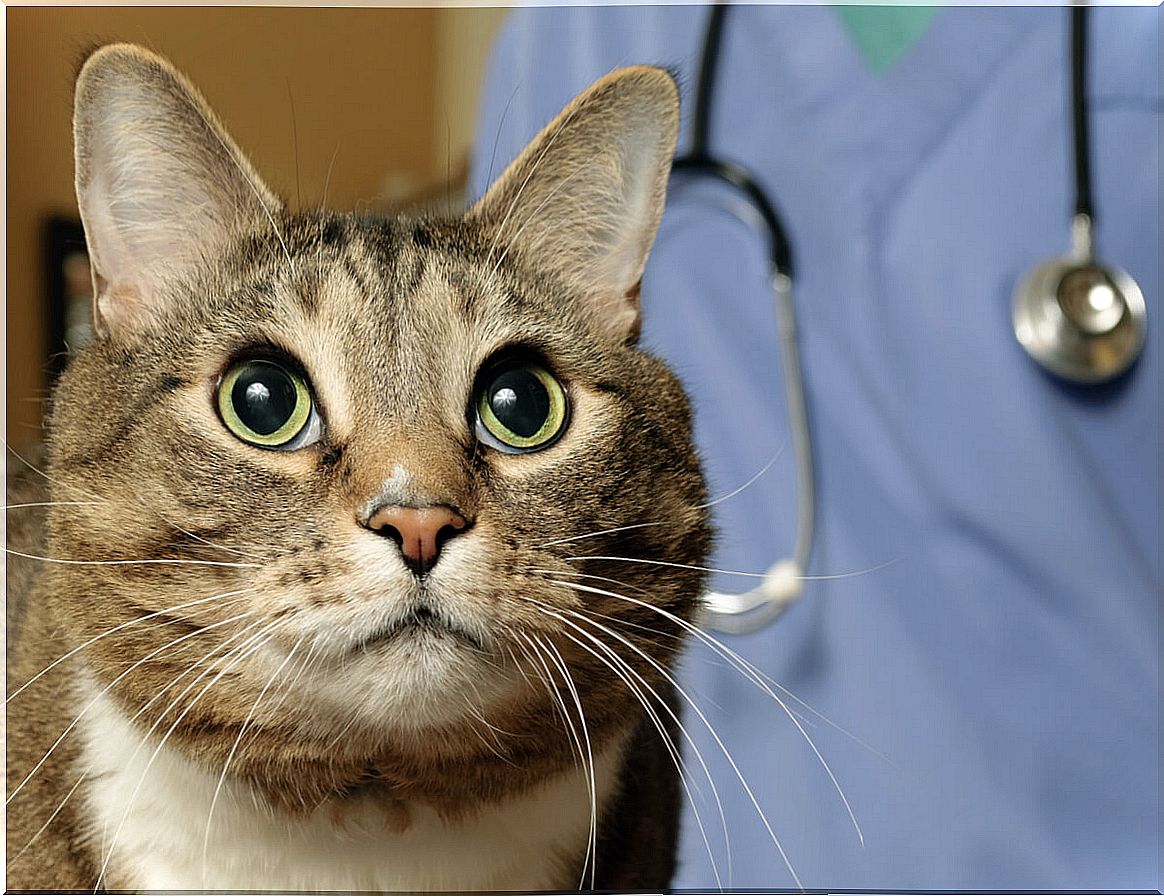Acromegaly In Cats: Symptoms And Treatments

Acromegaly is an endocrine disease consisting of growth hormone (GH) hypersecretion. The origin of this alteration in cats is the presence of a tumor in the pituitary. It is a rare disease but, unfortunately, it can be quite serious.
Normally, the signs of acromegaly are detected by the presence of other diseases, in this case it may be due to insulin resistance in a treatment for diabetes. The definitive diagnosis is confirmed by imaging and blood levels of certain hormones.
Acromegaly in cats
Feline acromegaly has the same origin as in other species – except in the case of the dog -: an anterior pituitary lesion or an adenoma responsible for the dysregulation in the production of GH, the growth hormone.
Growth hormone is secreted by the pituitary by stimulation of another precursor hormone, somatocrinin, which is produced in the hypothalamus. The secretion of this hormone is inhibited by another hormone, somatostatin, which is also produced in the hypothalamus when GH levels are high.

Growth hormone effects
The growth hormone has effects on metabolism, since an excessive production of it affects the physiology of the animal. On the one hand, it stimulates the hepatic production of glucose, liposysis and increases the oxidation of lipids.
Due to this, an excess of the hormone results in persistent hyperglycemia that generates a state of hyperinsulinemia – high presence of insulin in the blood – to counteract. Excessive insulin concentrations lead to glucose intolerance. Therefore, insulin-resistant diabetes is a sign of acromegaly.
In addition, the growth hormone also secretes the hormone IGF-1 (Insulin – like Factor -1), which stimulates the proliferation of many tissues. Morphological changes are also another sign of acromegaly: organomegaly, deformation of the limbs, weight gain, and other characteristic symptoms.
Symptoms in cats
According to statistics, male cats around 10 years old are more prone to acromegaly, but no differences have been observed between different feline breeds. Some of the most common symptoms are the following:
- Insulin resistance associated with the usual signs of diabetes mellitus : polyuria, polydipsia, changes in appetite and weight, and other events.
- Weight gain unexplained by the tutor.
- Cardiovascular symptoms : acromegaly can develop hypertrophic cardiomyopathy.
- Morphological modifications: abnormal enlargement of certain organs (organomegaly). A widening of the face is also common.
- Respiratory sound
- Lower prognathism: the jaw seems to protrude from the mouth.
- Accelerated nail growth.
- Lameness of one or more limbs.
- Nervous or behavioral signs
Is there a treatment for acromegaly in cats?
There are currently several types of treatment for cats with acromegaly. We present them to you in the following lines.
Surgical treatment
Surgery consists of a hypophysectomy, that is, the removal of the pituitary gland along with the tumor causing acromegaly. It is a complicated operation that is usually performed only in highly specialized centers by expert surgeons.
Due to the difficulty of the surgery itself, the condition of the animal and the postoperative care it requires, it is a risky procedure, but it can have very good results.
In 2012, the UK’s Royal Veterinary College (RVC) performed the first successful hypophysectomy surgery to treat a cat with acromegaly. To date, in 2019, the most qualified professionals exceeded 100 surgeries performed.
Radiation therapy treatment
It is the most used method for cats with acromegaly. Radiation therapy controls the extent of the tumor while reducing insulin needs. However, with this treatment it is not possible to normalize the levels of growth hormone as is the case with hypophysectomy.
In addition, their unavailability, costs, and need for repeat anesthesia pose considerable inconvenience to guardians of sick cats. Very specialized institutions are required to carry out this type of treatment.
Drug administration
It consists of the administration of somatostatin analogues and aims to reduce insulin needs in treated cats. Parallel to this treatment, the size of the pituitary gland and growth hormone concentrations are monitored.

If the cat’s guardian decides not to follow any of the above treatments, they have the option of alleviating the symptoms. Taking high doses of insulin twice daily can treat acromegaly relatively effectively. Considering the amount of insulin to be administered, this option can be just as expensive as the previous ones.
Furthermore, fighting insulin resistance can only be considered when there are no nerve signs associated with the pituitary tumor. The other symptoms that may arise from acromegaly should also be treated palliatively.









